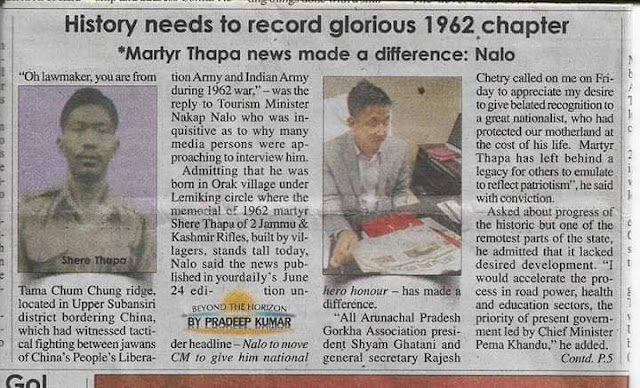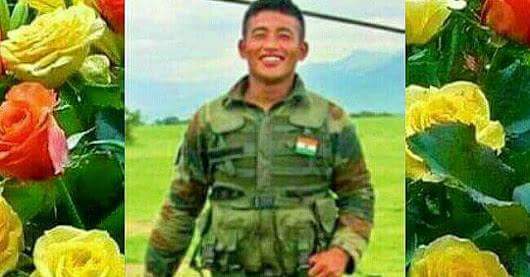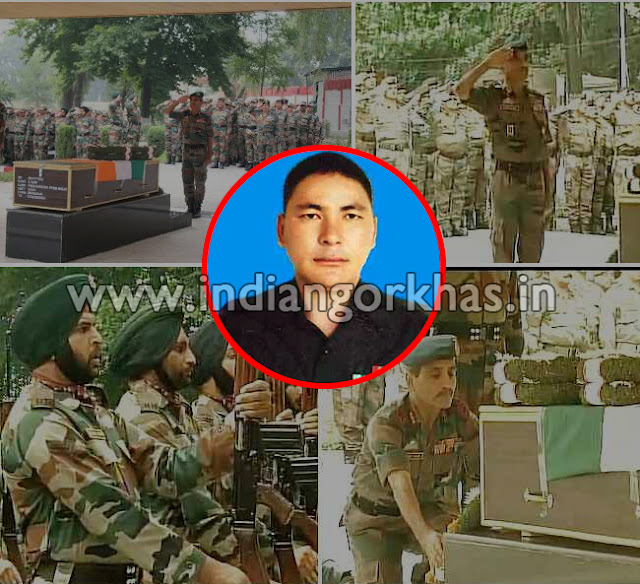‘Punya Smaran
Swargiya Hawaldar Sher Bahadur Thapa
2 J &K RIF “Bodyguard”
Is veer ne 1962 mein Chiniyo ki chakke udaye
Inka naam yahan ke bacche bacche ke zaban par hain
Deshvasiyo ki aur se tumhe sat- sat pranam.’
Itanagar , Fri, 19 Oct 2012 ANI
By Pradeep Kumar (ANI)
Itanagar, Oct. 19 (ANI): His light machine gun boomed relentlessly, like a roaring tiger. One after another unsuspecting Chinese soldiers were killed and fell into the Ngo River without anyone to count. The day was October 18 half-a-century ago.
A brave Shere Thapa of the Indian Army's 2 Jammu and Kashmir Rifles, hiding in a very advantageous position, fired non-stop as his lone soldier-mate continued changing the carbines.
The People's Liberation Army of China had sneaked through the Tama Chung Chung Ridge. Thapa had positioned himself on a vertical slope - invincible high mountain ridge on one side, steep slope down to the Ngo stream, the source of the Subansiri River, on the other side. He had located the most strategic place, either to stop or kill the advancing Chinese soldiers.
Thapa did not notice anymore Chinese after emptying all magazines with the fired brash khokas lying scattered. He confidently came out of his bunker for a recce. Death was waiting for him. He peeped towards the heap of corpses with great satisfaction. A wounded, but alive Chinese soldier, lying on the heap along with his colleagues fired, killing him instantly.
The corpses of the Chinese soldiers were piled up so much that the river failed to carry them. This is the folklore. The great soldier is highly revered in the area for his gallantry act.
Comparatively, brave Thapa was no less a war hero than subedar Jaswant Singh Rawat (No. 4039009 of the 4th Garhwal Rifles Bn), who had fought a lone battle against the invading Chinese in Eastern Sector (Tawang). He was conferred the highest military honour, the Param Vir Chakra, for his bravery. Jaswant Garh, a few km ahead of the pass, stands tall today as a testimony to his heroism.
Political interpreter Chader Mangha along with many villagers, who carried supplies, arms and ammunition for Thapa's Army section, were witness to his bravery. Mangha, who died in 1994,was given a commendation certificate by the GoI in recognition of his service to the nation and promoted to the rank of political assistant. He had also narrated the entire episode to his daughter Yating Byaling a resident of Gosing Taying village under Taksing circle, wife of RD Minister Tanga Byaling. Byaling also vouch of the bravery of Thapa and the village folk.
Even the Chinese had respectfully buried him and left a small note praising his bravery. Why none ever bothered to honour his brave act, even posthumously is intriguing? I have high respect for Rawat as he was a great martyr, but Thapa deserves equal honour.
Villagers inhabiting the Indo-China border claim that the PLA had sent its troops through passes, including Taksing, Mechuka, Anini, etc where the forces camped waiting for orders. Had the war prolonged, Chinawould have launched a multi-pronged attack but withdrew its forces after cessation of firing, following 29 days (Oct 18 to Nov 16, 1962) of fierce battle, leading to the humiliating defeat of the Indian Army.
Supply line was cut off following retreat order which never reached the duo. Left with no food and insufficient ammunition, they feared any eventuality and decided to fight till death. Thapa sacrificed his life in Middle sector (Upper Subansiridistrict) while protecting Mother India. His mortal remains were brought to Lemiking, last rites performed and a grave built there. The neglected grave and a bridge named after him are evidences of his heroism.
"The first bridge, named after soldier Shere Thapa, with a 600m steep climb...." is the reference about him with picture of his grave found in 'Secrets of Subansiri, Himalayan Club, recoding the 2005 expedition report by a group of trekkers to famous Buddhist pilgrimage Takpa Shiri; Arunachal Expedition - Takpa Shiri; In Search of Old Pilgrimage Route to Takpa Siri 2005 and India 2005 - Alpine Journal.
Thapa knew well that without any road and communication then, expecting any support from the base camp was well neigh impossible. He decided to face the enemies as a brave soldier of Mother India. Shouldn't he be recognized, albeit late, and due honour given by bringing his heroic story before the nation.
I presumed that martyr Shere Thapa, might not have a god father or a senior Army officer to recommend their brave act. But with facts surfacing, it is still not late to honour them. By Pradeep Kumar (ANI).
We appreciate and grateful to Hon’ble Minister Tourism Shri Nakap Nalo for rediscovering buried story of our True Hero, a Martyr of 1962 war Late Hav. Shere Thapa.
Via All Arunachal Pradesh Gorkha Welfare Youth Association










.jpg)

